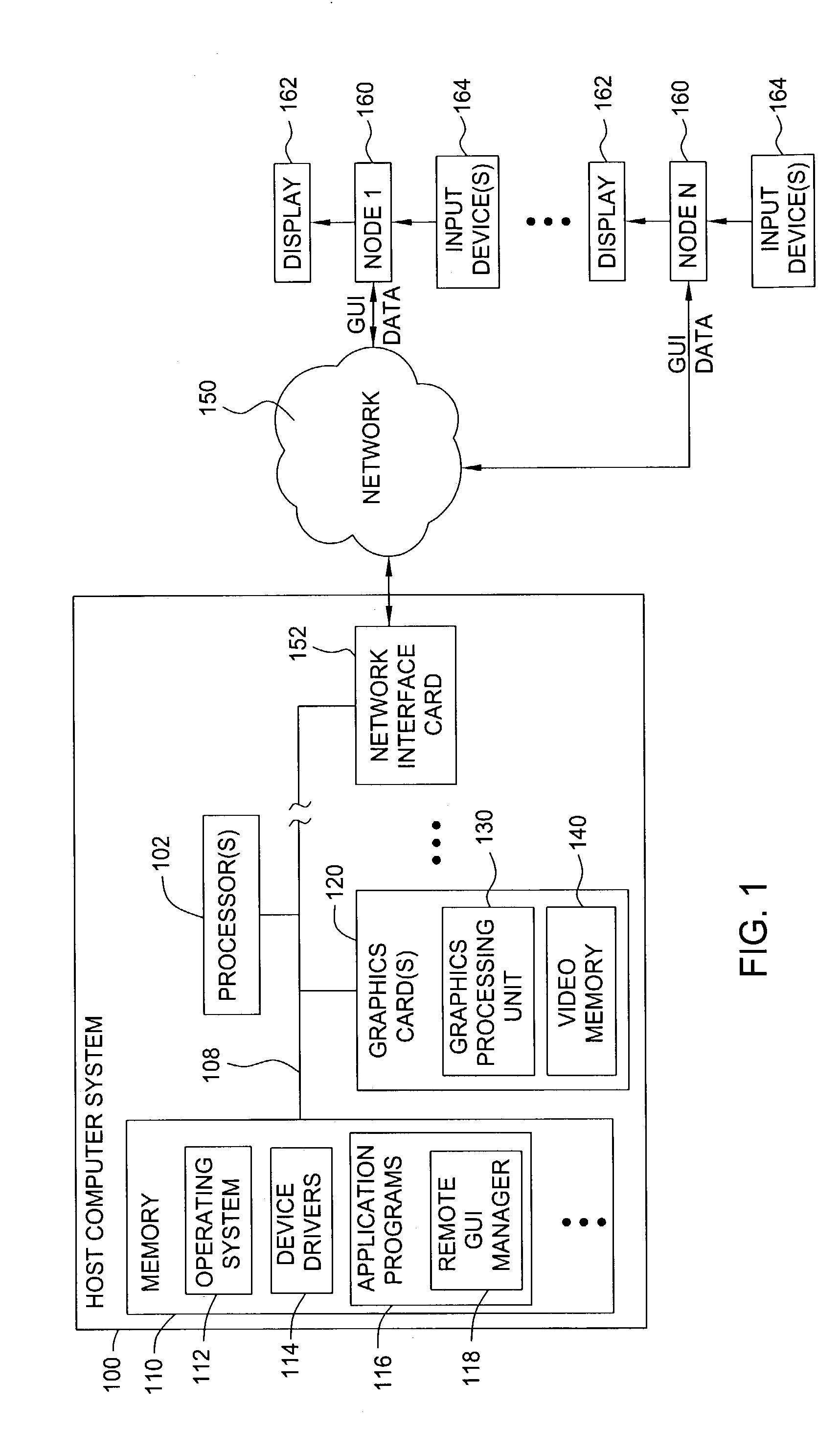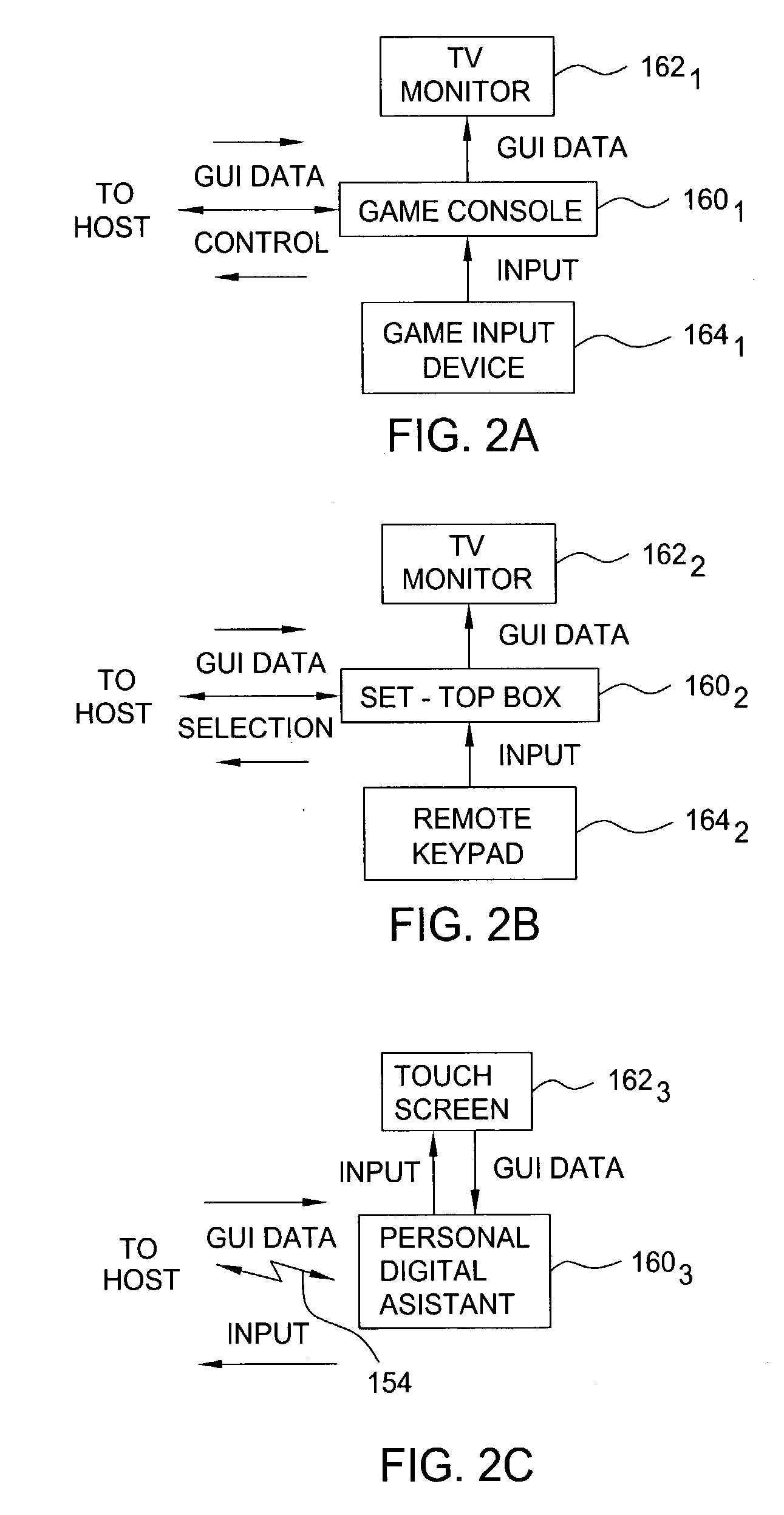Remote graphical user interface support using a graphics processing unit
remote graphical user interface technology, applied in the field of remote graphical user interface support using a graphics processing unit, can solve the problems of image unrealisticity, image on a 2d screen with high pixel density, visual perceptible image quality may suffer,
- Summary
- Abstract
- Description
- Claims
- Application Information
AI Technical Summary
Benefits of technology
Problems solved by technology
Method used
Image
Examples
Embodiment Construction
[0025]The display, on a remote node, of a three-dimensional (3D) image rendered on a host system in a first image format is described. In general, the 3D image is transformed into a second image format that is compressed (i.e., uses fewer data bits per pixel) relative to the first image format, (optionally) scaled to a screen size of remote node, and subsequently transferred to a remote node for display.
[0026]As an example, the first image format may be an RGB-based format, such as RGBA (32-bits per pixel) or standard RGB (24-bits per pixel) and the second image format may be a YUV-based format, such as YV12 (12-bits per pixel). Transformation of the image from the first image format to the second image format, as well as scaling of the image to the screen size of the remote node may be done in a graphics processing unit (GPU) on the host system. As used herein, the term RGB generally refers to an image format that uses three separate components, red (R), green (G), and blue (B), to...
PUM
 Login to View More
Login to View More Abstract
Description
Claims
Application Information
 Login to View More
Login to View More - R&D
- Intellectual Property
- Life Sciences
- Materials
- Tech Scout
- Unparalleled Data Quality
- Higher Quality Content
- 60% Fewer Hallucinations
Browse by: Latest US Patents, China's latest patents, Technical Efficacy Thesaurus, Application Domain, Technology Topic, Popular Technical Reports.
© 2025 PatSnap. All rights reserved.Legal|Privacy policy|Modern Slavery Act Transparency Statement|Sitemap|About US| Contact US: help@patsnap.com



